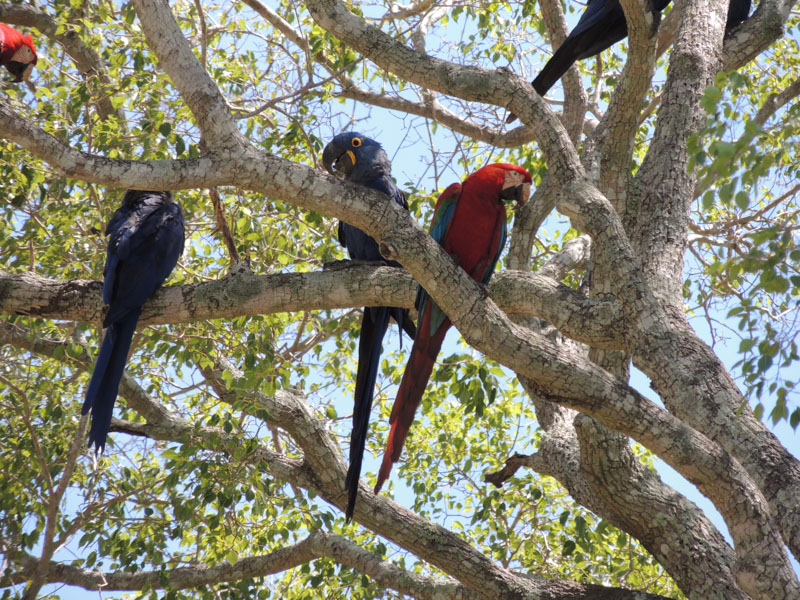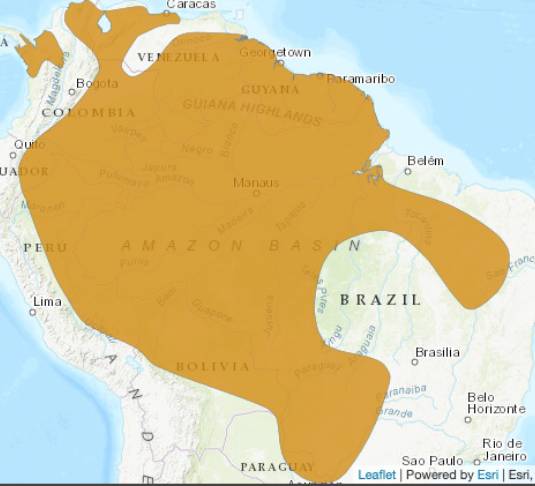Length: 90 to 95 cm.
Weight: 1050 to 1708 g.
Coloration: Red coloration, different from the scarlet macaw for having green wing feathers in place of the yellow ones and for the narrow row of red feathers on the white facial skin.
Status
This species is not in danger of extinction (CITES II), but is highly commercialized and its feathers are collected by indigenous peoples. This species is also being studied by the Hyacinth Macaw Project team. See some of the research results in Publications.
Source: IUCN
Image gallery
Geographical Distribution
Panama, Colombia, Guyanas, Ecuador, Peru, Bolivia, Paraguay and Argentina. In Brazil they occur in the North, Midwest, Bahia, Minas Gerais and São Paulo. Since 2002 she has lived in the city of Campo Grande, capital of Mato Grosso do Sul, where she is easily observed.
Habitat
Floodplains with buritizais, babassu and forest edges.
Food
Fruits and seeds mostly from palm trees.
Threats
It is not in imminent danger. But like most Brazilian animals, this species has problems locally, that is, it is abundant in some places and in others it is not very frequent, as the destruction of the environment in these places has driven the macaws away. It is often found in captivity.






